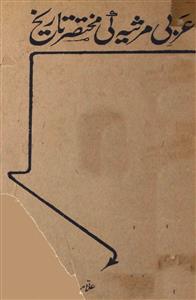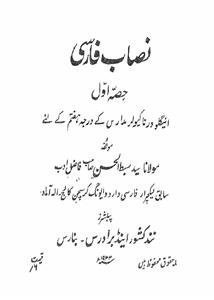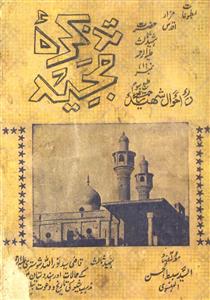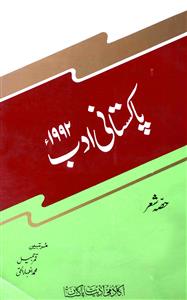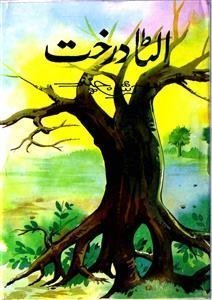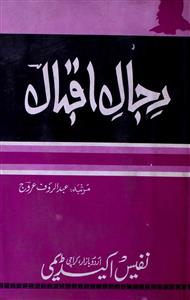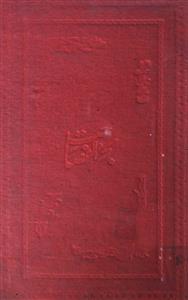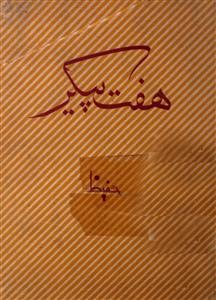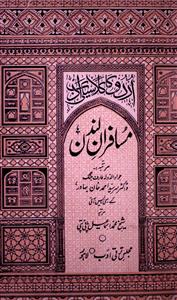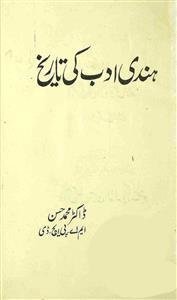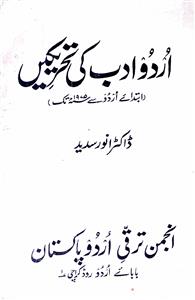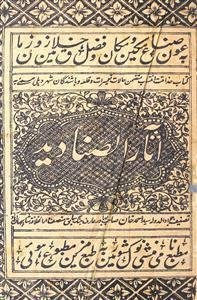 For any query/comment related to this ebook, please contact us at haidar.ali@rekhta.org
For any query/comment related to this ebook, please contact us at haidar.ali@rekhta.org
About The Author
Life and Times of My Father: Allama Saiyyid Sibtul Hasan Fāzil-i Hanswi (12 December 1908 – 7th April 1978)
This year is the 45th death anniversary of my father. In 1978 I had just joined the university after leaving school and was doing my BA (Hons) first year when Abba expired. He had in his lifetime authored around 33 books and monographs apart from numerous articles.
Just a day before he bade farewell to us all, he had finished the fifth revised edition of his book, Tazkira-i Majid, the first detailed biography of Qazi Nurullah Shustari (a courtier and Qazi of the Army of Emperor Akbar) in any language. That day he was feeling relaxed and asked one of my sisters to bring his hand-written travelogue and asked us to assemble around him, for he was going to read us some portions from it.
In spite of our protests, he started reading his safarnama to the holy lands and narrating how he sailed by ship towards the holy lands. He narrated to us how he and his team of companions got lost in the vast desert and how miraculously he escaped scorpion bite and a heavy crashing gate at an oasis and ultimately reached Mecca (or was it Medina?) with the help of a stranger-guide who then disappeared back into the deserts.
Syed Sibtul Hasan was born to Syed Faizul Hasan in 1908 (as per his passport) and as a child had been brought up in Benares where he also got his early education. He had lost his own mother at the time of his birth and had been brought up by his elder sister. His father married twice again but lost his second wife too to childbirth. The third wife of his father (Dadda, who survived my father a few months) was from Benares itself and was proud of the fact that she belonged to the family tracing its origins from the great Mughals.
Abba had three brothers (Aliul Hasan, Nasirul Hasan and Munirul Hasan) and three sisters.
Education and Early Life
Having been brought up on the banks of the ghats of Benares and being educated in an Arabic Madrasa under the tutelage of two very well known Shi’i theologians, Abba since childhood was a proponent of the Ganga-Jamuni tehzeeb. Apart from his own theology, he was well versed in Hindu philosophical traditions. He was at ease with both Quran and the Geeta. Nahjul Balagha, the collection of Hazrat Ali’s sayings and sermons was however his favourite book.
Abba started his teaching career from Ewing Christian College, Allahabad where he taught Arabic and Persian. Nurul Hasan, the future Education Minister of India was one of his students. He was possibly recruited in Ewing Christian College soon after he completed his basic graduating degree in Persian and Arabic: we have a group photograph of him in a group of teachers from the College dated 1934. In 1933 his course book for teaching Persian was published which was prescribed for the students of the same college of Allahabad. Another work, a compilation of extracts from various writers translated into Urdu was published for the college students in 1937. Both can be accessed on the Rekhta website (Sibtul Hasan)
Abba and Civil Disobedience Movement:
At Allahabad Abba was gradually drawn into the ongoing freedom struggle and as a young boy had participated in the Boycott movement and the anti-Rowlatt agitation. He was one of the members of the Vanar Sena along with a young Indira. He turned into an ardent supporter of Congress and a follower of Mahatma Gandhi and Pandit Nehru.
As a result of his involvement in Civil Disobedience Movement, he was thrown out of his job. This is substantiated by the two books mentioned above: both mention him as “sābiq lecturer”. In 1933 he was sent to jail for some time.
By now he would not wear anything but khadi– a practice which he followed even after Independence.
Service in Mahmudabad and Visit to Karbala and Najaf
By late 1930’s he had settled in Lucknow where he also started taking active part in Shia political movement. Along with Maulana Nasirul Millat, MLC, the co-author of Abaqāt al-Anwār, and Saeedul Millat he went to Najaf, Karbala and Mashhad. At Najaf hauz-i Ilmiyya, he came in contact of Ayatollah Burujardi who gave him a diploma. He had a total of 18 ijāza (diplomas) from various marāje (top level Shi’i Mujtahids) of the age: a feat which very few Indian Shi’i theologians can boast of.
After his return to India, a few years before Independence, he joined service in the Estate of Mahmudabad where he looked after the state library. He was also appointed as atālīq (tutor) of a relative of the Raja, Amīr Imam. Though the Mahmudabad Estate and the Raja were closely linked with Muhammad Ali Jinnah and his Muslim League, Abba remained a staunch Gandhian and a Nehru supporter.
A Miraculous Dream and Return to India:
According to the diary maintained by my father, when India gained Independence in August 1947, he was at Karbala in Iraq. When the news of Independence and Partition reached Abba, he was in a quandary where to go? His mother land where Muslims were being massacred? Or should he goto Pakistan, the very concept of which he had opposed? An influential and well-to-do Tanzanian offered him instead to settle in Dares Salam and become a prayer leader. Abba writes in his diary that, that he passed the night praying at the sepulchre of Imam Hussain and cried almost the whole night pleading the Imam that he did not want to make religion a profession. Oh Husain show me the way!
When after the morning prayers he reached his residence he found a man waiting. The man, named Abduz Zahra enquired: are you Saiyyid Sibtul Hasan? When he was told yes, he informed, “I have been asked to give this message to you: Go back to India!”
That very day my father writes, a letter from Nehru arrived requesting him to come back to India.
He thus returned back and settled once again in Lucknow.
Migration and Service in Aligarh:
In 1953 at Lucknow, he received a letter from Dr. Zakir Husain, the then Vice Chancellor of Aligarh Muslim University regarding a vacancy in the university library. In 1954 Abba joined as an assistant librarian and was soon appointed to the position of an in-charge of a section which he helped create. His letter of appointment was given to him by Professor Mohammad Habib, one of the only two professors at Aligarh. Under his charge, he virtually built the Manuscript Section of the Maulana Azad Library and helped in acquiring, identifying and preserving a large number of manuscripts and related artefacts. A large number of manuscripts still carry the identifying explanatory notes in his hand writing.
Retirement and Ill-Treatment of AMU:
Abba ultimately retired in 1971. The ungrateful university where he had served – the Aligarh Muslim University- inspite of all services rendered by him, denied him even his pension which he never got! Today he remains forgotten by the very institution which he helped build block by block.
I remember him climbing stairs at the Victoria Gate where the Registrar’s office and VC office then was, with his papers for the release of what was his due. I also would sometimes accompany him. On one such occasion, one VC while holding his application upside down pretended to read it! During my own suspension by another “learned” Vice Chancellor, when I would get depressed, my father’s plight helped me gather my senses! If he could be made to suffer after all that he had done, who was I? It is for some reason indeed that some people call Aligarh as Kufa!
Academic Contributions & Publications:
He was a scholar par excellence: the Shah of Iran respected him. His letter to the Shah helped many to get their desires fulfilled. In his collection one finds letters which Ayatollah Khomeini wrote to him.
When I went to Teheran in transit to Dushanbe in 2002, and went to Teheran University for the Friday Congregation, the Ayatollah on hearing that I was Fāzil-i Hanswi’s son, kissed my hand and exclaimed how lucky I was to be the son of this revered being!
During his lifetime Abba wrote around 33 scholarly books in Urdu. Amongst his most important works are Minhāj-i Nahjul Balāgha, al-Kutub wal Maktabāt, Tārīkh-i Azådāri, Tazkira-i Majįd, Arabi Marsiye ki Tarikh and Izhār-i Haqīqat. He also penned a large number of articles published in various Urdu journals.
The Minhāj was a work of its kind. It was a refutation of the view that Nahjul Balāgha was not a work of Imam Ali. The Kutub, on the other hand is the history of Books and Libraries in Islamic world, especially India. Tarīkh-i Azādāri, as the name suggests is a history of commemoration of Imam Husain’s martyrdom in India. Tazkira-i Majīd was the first ever biography of Qazi Nurullah Shustari attempted anywhere. It not only provides a life sketch, but is one of first such biographical accounts based on original sources. When S Athar Abbas Rizvi wrote his biography of the Qazi, he merely copied from this work.
The writing of Izhār-i Haqįqat:
In 1950’s a great turmoil was caused in the Shi’i world through the writing of the first edition of Shahīd-i Insāniyat by the renowned Shi’i scholar, Allama Syed Ali Naqi Naqavi, better known as Naqqan Sahib. In this first limited edition of the book which was soon withdrawn after the furore it caused, there were passages where it was claimed that there was no paucity of water in Karbala and that Imam Husain, in fact, had a bath before he went to the battlefield. Later the author explained that it was not his own view but was citing someone else. The critics, amongst whom this work was distributed found many other contentious issues as well. One of the first authoritative, academic and detailed refutation of this work was my father’s Izhār-i Haqīqat.
The relation which my father had with Naqqan Sahib were purely academic: Both would visit each other, attend each other’s majālis and exchange pleasantries in spite of their different theological positions. Most days Naqqan Sahib would sit in my father’s office in the Manuscript Section and read the unpublished and published books. They would also discuss the new works they had read that day. Unlike many “anti-Naqqan” or “pro-Naqqan” protagonists ( the whole Shi’i community was those days divided into these two camps, with no social or marital relations) my father always respected him, and he respected my father.
Once I remember walking down from our house when we encountered Naqqan Sahib coming back from the library. After the exchange of usual pleasantries, Naqqan Sahib said “Maulana be ready with your reply, I am writing something on Hazrat Ali Asghar!”. My father coolly replied, “Do write, I am ready!” And soon Naqqan Sahib’s article on the martyrdom of Ali Asghar as an unfortunate accident was published. The very next week my father’s reply to it was out!
Abba and Azādārī:
Fāzil-i Hanswi also had a great role to play in the establishment of Muharram commemorations (azādāri) in Aligarh. The first public ashra (10 day majālis) in Civil Lines after Independence and the first Alam procession (on the night of 9th Muharram: Shabi-i āshūra) was started by my father in 1954-55. Before that only two closed door majālis would be held: one in the Kothi of Raja of Asgharābad (Mahmud Manzil), the other in Shamshad Market at the house of Mansab Raza Sahib (father in law of Professor Tasadduq Husain).
Death:
My father died on 7th April 1978. In 1973 he had had a heart attack and a valve had been damaged. He also suffered from an acute bronchitis which had been caused due to accidental exposure to toxic fumes during a fumigation of Manuscripts in the Maulana Azad Library. He died of heart failure.
But as before his death, he had expressed his reservations about Aligarh, we took his bier to Agra at the Mazār of Qazi Nurullah Shustari, the building of which had been constructed under his directions. For decades he had been it’s mutawalli and the Honorary Secretary of the Society which was managing its affairs.
His dedication to the place had been such that a couple of years before his death, when someone handed him a brief case full of currency as nazrana, despite of his very poor economic conditions, and despite the man’s protestations, he directed the gentleman to deposit it in the safe of the shrine!
Abba was buried in a room which housed the graves of his closest friend, Maulana Saeed ul Millat and that of his father Nāsirul Millat.
Miracle of the Grave
When I buried my father I thought I had seen him for the last time. But then after burying my father at Agra near the grave of Qazi Nurullah Shustari on 8th April 1978, I was able to see him again 19 years later!
On 1 July 1997 I was informed his grave had caved in. When I reached there I found a body within the grave. Suspecting foul play, I entered the grave and lifted the shroud: my father lay there, as if asleep! Not an extra wrinkle! Though having been in the field of history and archaeology, I knew of instances before when body had been preserved, for me, given the character of my father, it was nothing but a miracle!
I believe Abba you are ever there looking after us! God bless you! Rest in Peace!
 For any query/comment related to this ebook, please contact us at haidar.ali@rekhta.org
For any query/comment related to this ebook, please contact us at haidar.ali@rekhta.org
